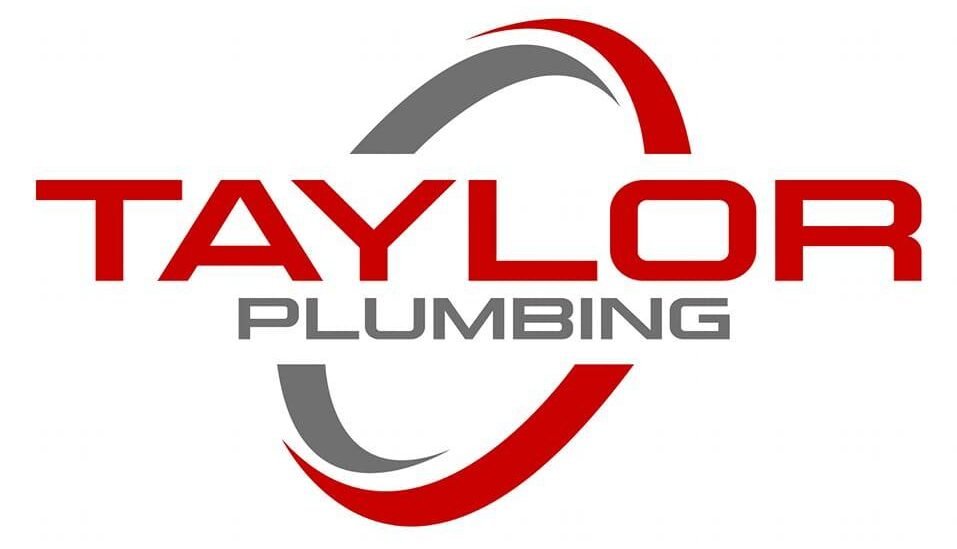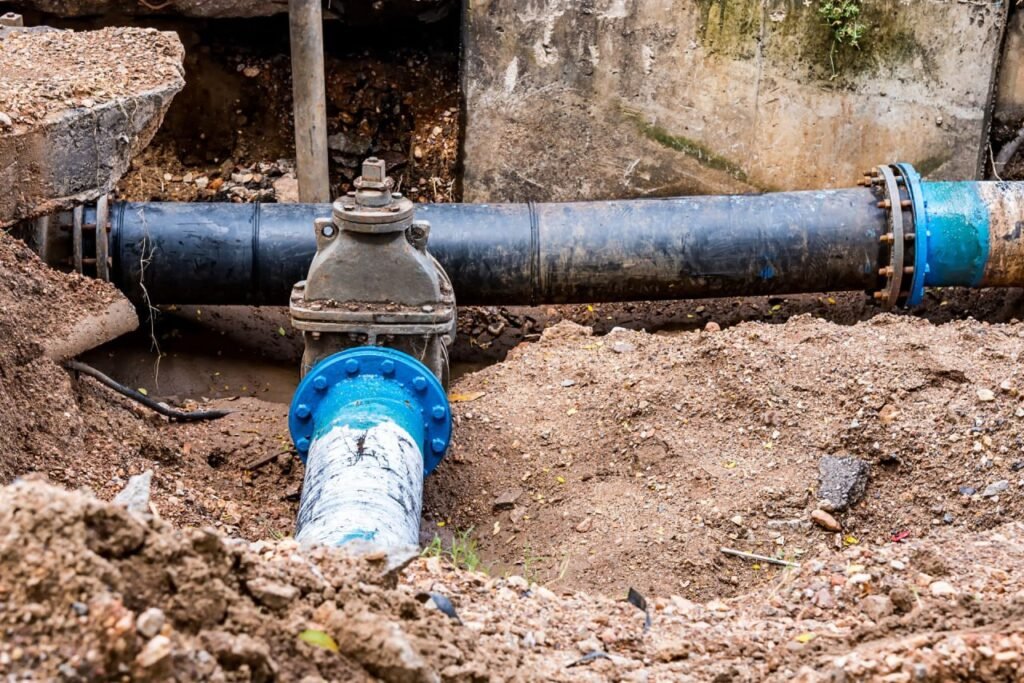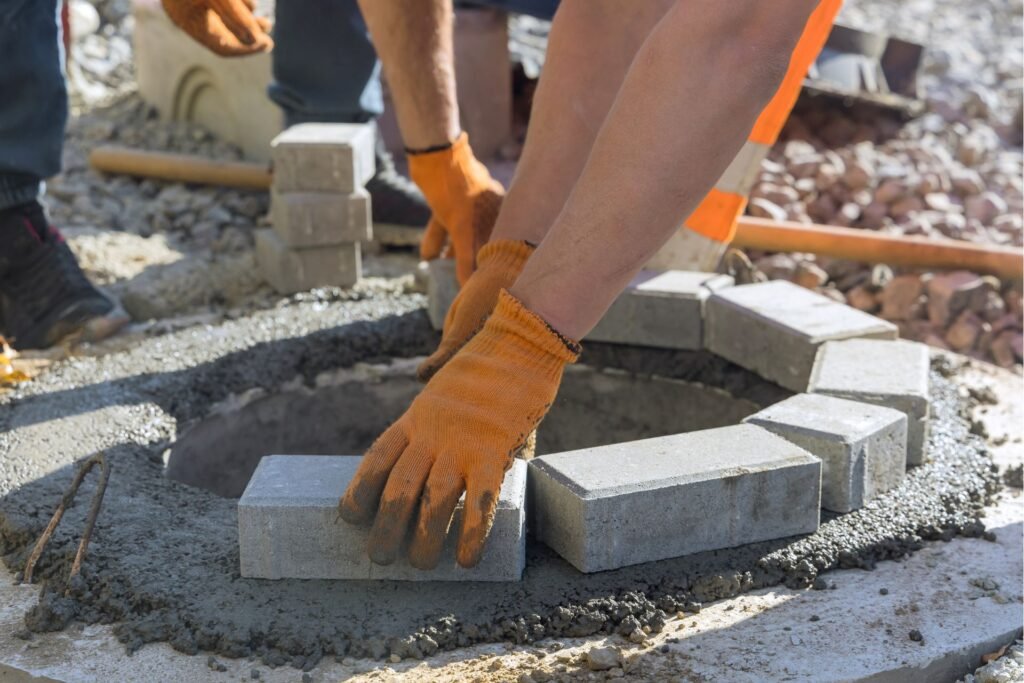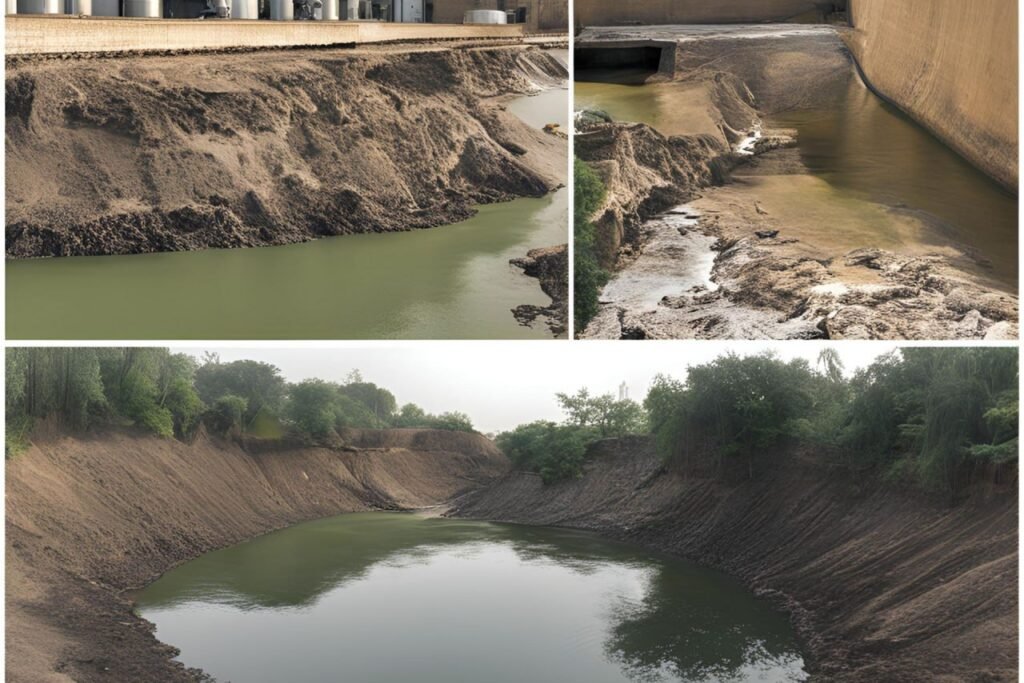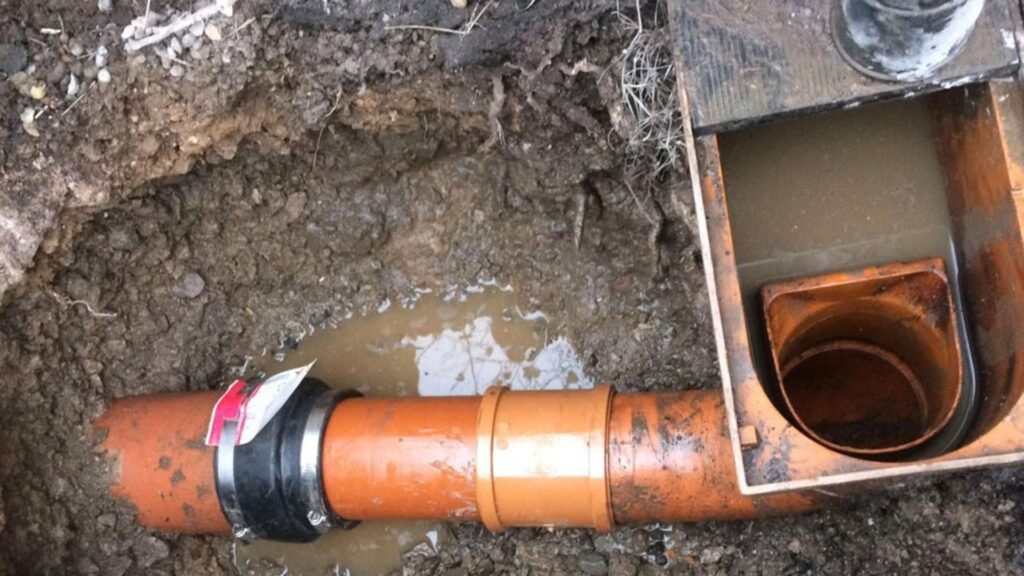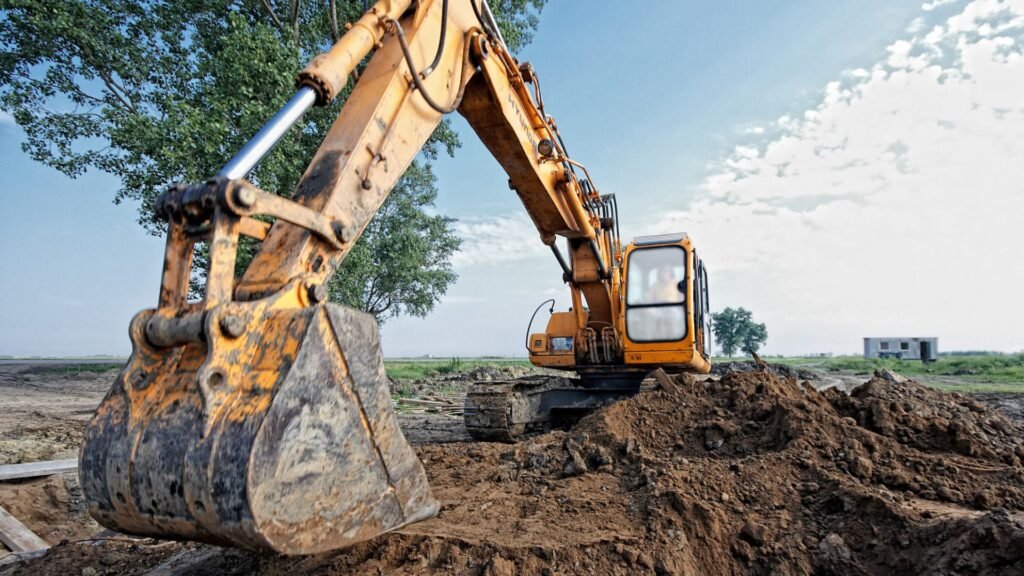Welcome to our comprehensive guide on understanding sub soil drainage systems in New Zealand. In this post, we will explore the vital role these systems play in maintaining the health and longevity of your property amidst the unique soil and weather conditions found in NZ. Whether you’re dealing with waterlogged soils, protecting your home’s foundation, or simply looking to improve your garden’s health, understanding sub soil drainage is crucial. We’ll cover everything from the basics of what these systems are, why they are essential in New Zealand, the different types available, installation processes, costs involved, and much more. Stay with us as we delve into the details to help you make informed decisions about your drainage needs.
Sub soil drainage systems in NZ are designed to manage excess water in the soil, preventing waterlogging and protecting property foundations. These systems typically consist of perforated pipes, French drains, and soakaway pits that efficiently channel water away from critical areas. Given New Zealand’s diverse soil types and varying rainfall, sub soil drainage systems are essential for maintaining healthy landscapes and ensuring the structural integrity of buildings. Proper installation and maintenance of these systems can significantly enhance property longevity and resilience against water-related issues.
- What Are Sub Soil Drainage Systems
- Why Sub Soil Drainage Is Essential In New Zealand
- Types Of Sub Soil Drainage Systems
- Key Considerations For Installing Sub Soil Drainage Systems
- Installation Process
- Costs Involved
- DIY Vs. Professional Installation
- Common Problems And Solutions In Drainage Systems
- Environmental Impact
- Case Studies And Testimonials
- FAQs: About Sub Soil Drainage Systems NZ
- What is a sub soil drainage system?
- Why are sub soil drainage systems important in New Zealand?
- What are the different types of sub soil drainage systems?
- How do I know if I need a sub soil drainage system?
- Can I install a sub soil drainage system myself?
- What factors should I consider when designing a sub soil drainage system?
- What is the typical cost of installing a sub soil drainage system in NZ?
- How do I maintain my sub soil drainage system?
- Are there any environmental benefits to having a sub soil drainage system?
- What are the regulations for sub soil drainage systems in New Zealand?
- Conclusion
What Are Sub Soil Drainage Systems
Sub soil drainage systems, also known as subsurface drainage systems, are engineered solutions designed to remove excess water from the soil below the ground’s surface. These systems are crucial in preventing water accumulation that can lead to waterlogging, soil instability, and damage to building foundations and infrastructure. By efficiently channeling water away from critical areas, sub soil drainage systems help maintain soil health and structural integrity.
Components
The effectiveness of a sub soil drainage system relies on its well-designed components, which work together to manage and redirect water. Key components include.
1. Drainage Pipes: These perforated or slotted pipes are typically made from durable materials like PVC or HDPE. They are installed below the ground and serve as conduits for water, allowing it to flow away from the saturated soil.
2. Filter Materials: Surrounding the drainage pipes, filter materials like gravel, sand, or geotextile fabrics play a vital role in preventing soil and debris from clogging the pipes. These materials act as barriers, ensuring that only water enters the drainage system.
3. Drainage Trenches: Trenches are dug to house the drainage pipes and filter materials. They are strategically positioned to capture and direct water flow away from areas prone to waterlogging.
4. Outlet Points: These are the discharge locations where collected water is safely released, typically into a stormwater system, a natural water body, or a designated drainage area. Properly designed outlet points are essential for preventing backflow and ensuring efficient water removal.
5. Inspection Chambers: These access points are placed at intervals along the drainage system to allow for maintenance and inspection. They ensure that the system remains functional and free from blockages.
Purpose
The primary purpose of sub soil drainage systems is to manage and mitigate excess water in the soil, which can cause a range of problems if left unchecked. The key benefits include.
1. Preventing Waterlogging: Excess water can saturate the soil, leading to waterlogging that negatively impacts plant growth and soil stability. Sub soil drainage systems help maintain an optimal moisture balance, promoting healthy vegetation and soil structure.
2. Protecting Foundations: Water accumulation around building foundations can cause soil expansion and contraction, leading to structural damage. By directing water away from foundations, these systems help prevent cracks, subsidence, and other structural issues.
3. Enhancing Soil Stability: Excess moisture can weaken soil, making it prone to erosion and landslides. Sub soil drainage systems improve soil stability by removing excess water, reducing the risk of soil movement and ensuring a solid foundation for construction and landscaping.
4. Increasing Usable Land: By effectively managing water, sub soil drainage systems transform previously unusable, waterlogged areas into functional, productive land. This is particularly beneficial for agricultural purposes and urban development projects.
5. Improving Plant Health: Proper drainage supports healthy root development by preventing waterlogged conditions that can lead to root rot and other plant diseases. This results in more robust and resilient plant growth.
Sub soil drainage systems are essential components of modern infrastructure, providing critical solutions to manage water in the soil. By incorporating well-designed drainage pipes, filter materials, trenches, outlet points, and inspection chambers, these systems effectively prevent waterlogging, protect foundations, enhance soil stability, increase usable land, and improve plant health. Implementing a sub soil drainage system is a proactive measure to ensure long-term soil health and structural integrity.
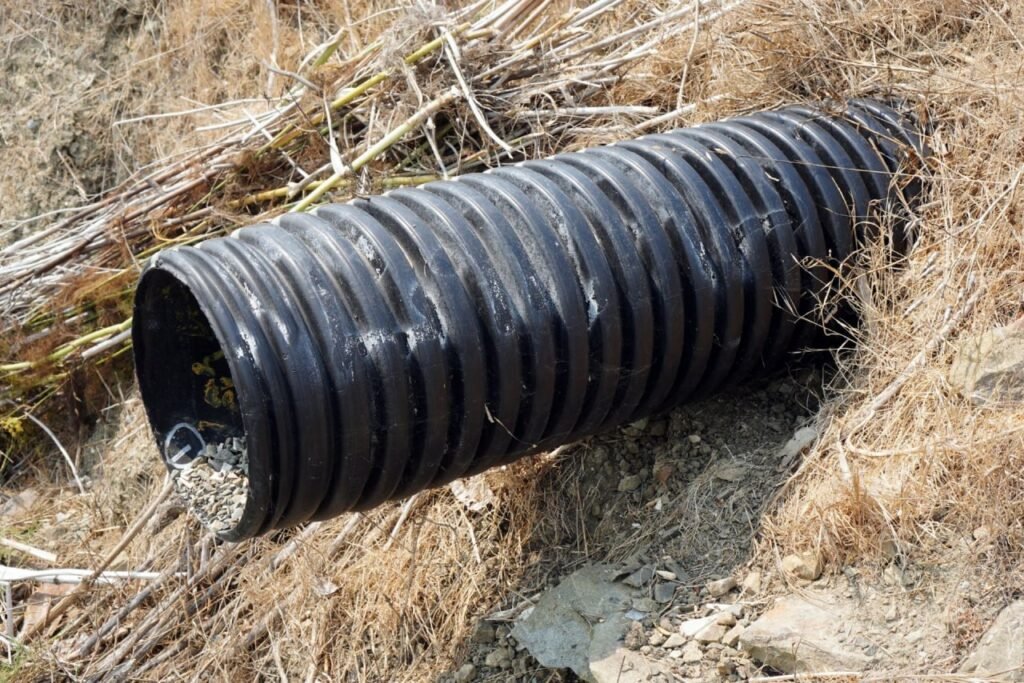
Why Sub Soil Drainage Is Essential In New Zealand
Sub soil drainage is a critical aspect of property management and land development in New Zealand. The country’s unique geographical and climatic conditions make it essential to implement effective drainage systems to protect properties and ensure long-term stability. Let’s delve into the key reasons why sub soil drainage is indispensable in New Zealand.
Soil Conditions
New Zealand’s diverse soil types play a significant role in the necessity for sub soil drainage. The country boasts a wide variety of soils, from sandy coastal soils to heavy clay soils in inland areas. Each soil type has distinct drainage characteristics that influence how water is absorbed and retained in the ground.
- Sandy Soils: Sandy soils, commonly found in coastal regions, have high permeability, allowing water to drain quickly. However, they can also lead to rapid erosion and instability if not managed properly. Sub soil drainage helps maintain soil structure and prevent excessive erosion.
- Clay Soils: In contrast, clay soils are prevalent in many inland areas and are known for their poor drainage properties. These soils tend to retain water, leading to waterlogging and increased hydrostatic pressure. Sub soil drainage systems are crucial in these areas to prevent water accumulation and ensure soil stability.
- Loamy Soils: Loamy soils, a balanced mix of sand, silt, and clay, are often found in agricultural regions. While these soils generally have good drainage, specific areas can still experience waterlogging. Sub soil drainage ensures that excess water is effectively managed, promoting healthy plant growth and preventing root rot.
Climate Factors
New Zealand’s climate is another vital factor influencing the need for sub soil drainage. The country experiences a range of weather patterns, from heavy rainfall in the west to drier conditions in the east. Seasonal variations also play a significant role in drainage requirements.
- High Rainfall Areas: Regions with high annual rainfall, such as the West Coast of the South Island, are particularly susceptible to drainage issues. Heavy and frequent rain can saturate the soil, leading to waterlogging and increased risk of landslides. Sub soil drainage systems help manage excess water, reducing the likelihood of soil erosion and property damage.
- Seasonal Rainfall: In areas with distinct wet and dry seasons, such as Auckland and Wellington, sub soil drainage is essential to manage seasonal fluctuations. During the wet season, effective drainage prevents water accumulation, while in the dry season, it helps maintain soil moisture levels, promoting plant health and reducing drought stress.
- Climate Change Impact: Climate change is expected to exacerbate weather extremes, making effective drainage systems even more critical. Increased frequency and intensity of rainfall events can lead to more severe flooding and waterlogging issues. Implementing robust sub soil drainage solutions now can mitigate future risks and protect properties from the adverse effects of climate change.
Property Protection
Sub soil drainage provides significant benefits for the longevity and health of properties in New Zealand. Effective drainage systems contribute to the overall stability and durability of buildings and landscapes.
- Foundation Protection: Excess water around building foundations can lead to structural issues, including foundation cracks and shifting. Sub soil drainage systems prevent water from accumulating around the foundation, maintaining the structural integrity of buildings and reducing the risk of costly repairs.
- Preventing Water Damage: Waterlogged soil can cause damage to underground utilities, driveways, and landscaping. By ensuring proper drainage, properties are protected from water damage, extending the lifespan of infrastructure and reducing maintenance costs.
- Enhancing Property Value: Well-drained properties are more appealing to potential buyers and tenants. Effective sub soil drainage systems improve the usability of outdoor spaces, prevent water-related issues, and contribute to a well-maintained appearance, ultimately enhancing property value.
- Promoting Healthy Landscapes: Proper drainage is essential for maintaining healthy lawns, gardens, and agricultural land. It prevents waterlogging, which can lead to root rot and other plant diseases, ensuring that landscapes remain lush and productive.
Sub soil drainage is a vital component of property management in New Zealand, addressing the unique soil conditions, climate factors, and property protection needs. By implementing effective drainage systems, property owners can safeguard their investments, enhance property value, and contribute to a healthier, more stable environment.

Types Of Sub Soil Drainage Systems
Perforated Pipe Systems
Perforated pipe systems are an effective solution for subsoil drainage, designed to manage water accumulation in various environments. These systems consist of pipes with small holes or perforations, allowing water to enter the pipe and be transported away from the area. Typically made from plastic or PVC, perforated pipes are lightweight, durable, and resistant to corrosion.
How They Work
Perforated pipes are installed in trenches filled with gravel or other aggregate material. The perforations allow groundwater to seep into the pipe, preventing waterlogging in the surrounding soil. As water enters the pipe, it flows through the trench and is directed away to a designated drainage area, such as a stormwater system or a natural water body.
Best Use Cases
Perforated pipe systems are ideal for areas prone to heavy rainfall or high groundwater levels. They are commonly used in agricultural fields, residential lawns, and commercial landscapes to prevent water accumulation that can damage plants, buildings, and other structures.
French Drains
French drains are a popular and versatile drainage solution, consisting of a trench filled with gravel and a perforated pipe that directs water away from problem areas. Named after Henry Flagg French, the inventor, these drains are effective in managing surface water and groundwater.
Design and Applications
The typical design of a French drain involves digging a trench, lining it with landscape fabric, filling it with gravel, and placing a perforated pipe within the gravel bed. The trench is then covered with more gravel and sometimes soil or turf to blend with the landscape. Water enters the trench, passes through the gravel, and flows into the pipe, which channels it away from the area.
French drains are suitable for various applications, including preventing basement flooding, reducing water pooling in yards, and protecting foundations from water damage. They are especially useful in areas with clay soil, which tends to retain water.
Soakaway Pits
Soakaway pits, also known as soakaways or infiltration pits, are underground structures designed to manage excess water by allowing it to percolate into the surrounding soil. These pits are typically filled with gravel or other aggregate materials and are often used in conjunction with other drainage systems.
Function and Installation
A soakaway pit functions by collecting and dispersing water into the ground, where it can naturally filter through the soil. To install a soakaway pit, a hole is excavated and filled with gravel or other porous materials. Water is directed into the pit via pipes or channels, and as it accumulates, it gradually seeps into the soil.
Soakaway pits are commonly used in residential and commercial properties to manage stormwater runoff, reduce surface water flooding, and prevent waterlogging. They are particularly effective in areas with permeable soil, where water can easily infiltrate the ground.
Comparison of Sub Soil Drainage Systems
When choosing the right subsoil drainage system, it’s essential to consider the specific conditions and requirements of your property.
Perforated Pipe Systems vs. French Drains
Both systems use perforated pipes to manage water, but their designs differ. Perforated pipe systems are typically used in open trenches filled with gravel, making them ideal for large areas like agricultural fields. In contrast, French drains incorporate a covered trench design, making them suitable for residential and commercial applications where aesthetics are a concern.
French Drains vs. Soakaway Pits
French drains and soakaway pits both handle water management but in different ways. French drains are designed to transport water away from an area, making them ideal for preventing basement flooding and water pooling. Soakaway pits, on the other hand, focus on dispersing water into the ground, making them suitable for managing stormwater runoff in permeable soil conditions.
Perforated Pipe Systems vs. Soakaway Pits
Perforated pipe systems and soakaway pits serve different purposes. Perforated pipe systems are excellent for continuous water removal over a large area, while soakaway pits are better suited for localized water dispersion. The choice between the two depends on the extent of water management needed and the soil’s permeability.
By understanding the unique features and applications of each subsoil drainage system, you can select the most suitable solution to maintain a dry and stable environment, protecting your property from water damage and ensuring optimal soil conditions.

Key Considerations For Installing Sub Soil Drainage Systems
When it comes to installing sub soil drainage systems, careful planning and execution are crucial to ensure long-term effectiveness and efficiency. Here are the key considerations to keep in mind.
Site Assessment: The Importance of Professional Site Assessment Before Installation
Before embarking on the installation of a sub soil drainage system, a comprehensive site assessment is essential. This initial step involves evaluating the landscape, soil type, and existing water flow patterns. A professional site assessment helps in identifying potential problem areas, such as low-lying spots where water tends to accumulate, and ensures that the drainage system is tailored to the specific needs of the site. By understanding the unique characteristics of the location, professionals can design a system that effectively manages water runoff and prevents issues like waterlogging and soil erosion.
System Design: Factors to Consider When Designing a Drainage System
Designing a sub soil drainage system requires careful consideration of several factors to ensure its effectiveness. The primary goal is to create a system that efficiently channels excess water away from the site. Key design elements include.
- Slope and Grading: Ensuring proper slope and grading is crucial for water to flow naturally towards the drainage outlets.
- Drainage Pipes: Selecting the right size and type of drainage pipes is essential for handling the expected volume of water.
- Outlets and Discharge Points: Determining suitable locations for water discharge is vital to prevent water from accumulating in undesirable areas.
- Accessibility: Designing the system with maintenance in mind, ensuring that it remains accessible for future inspections and repairs.
A well-designed system takes into account the site’s unique characteristics, anticipated water flow, and long-term sustainability.
Materials: Recommended Materials for Durability and Efficiency
Choosing the right materials for a sub soil drainage system is critical for its durability and efficiency. The materials must withstand the test of time and the forces of nature. Here are some recommended materials.
- Drainage Pipes: High-density polyethylene (HDPE) pipes are commonly used due to their durability and resistance to corrosion.
- Gravel and Aggregates: Using high-quality gravel and aggregates around the pipes helps facilitate water flow and prevents clogging.
- Geotextile Fabric: This fabric is used to wrap around the drainage pipes and gravel, preventing soil from entering the system and ensuring smooth water flow.
Investing in high-quality materials may have a higher initial cost, but it pays off in the long run by reducing maintenance needs and extending the lifespan of the drainage system.
Regulations: Overview of NZ Regulations and Compliance Requirements
Compliance with local regulations is a crucial aspect of installing sub soil drainage systems in New Zealand. The country has specific guidelines and standards to ensure that drainage systems are safe, effective, and environmentally friendly. Key regulatory considerations include.
- Resource Consents: Depending on the scale and impact of the drainage project, obtaining resource consents from local councils may be necessary.
- Building Codes: Adhering to building codes and standards ensures that the drainage system meets safety and performance requirements.
- Environmental Impact: Assessing and mitigating the environmental impact of the drainage system is essential to protect local ecosystems.
Staying informed about the latest regulations and working with professionals who understand the compliance landscape helps in avoiding legal issues and ensures that the drainage system is installed correctly and responsibly.
By considering these key factors—site assessment, system design, materials, and regulations—you can ensure that your sub soil drainage system is effective, durable, and compliant with New Zealand’s standards. Proper planning and professional execution are the foundations of a successful drainage system that protects your property and maintains its integrity over time.
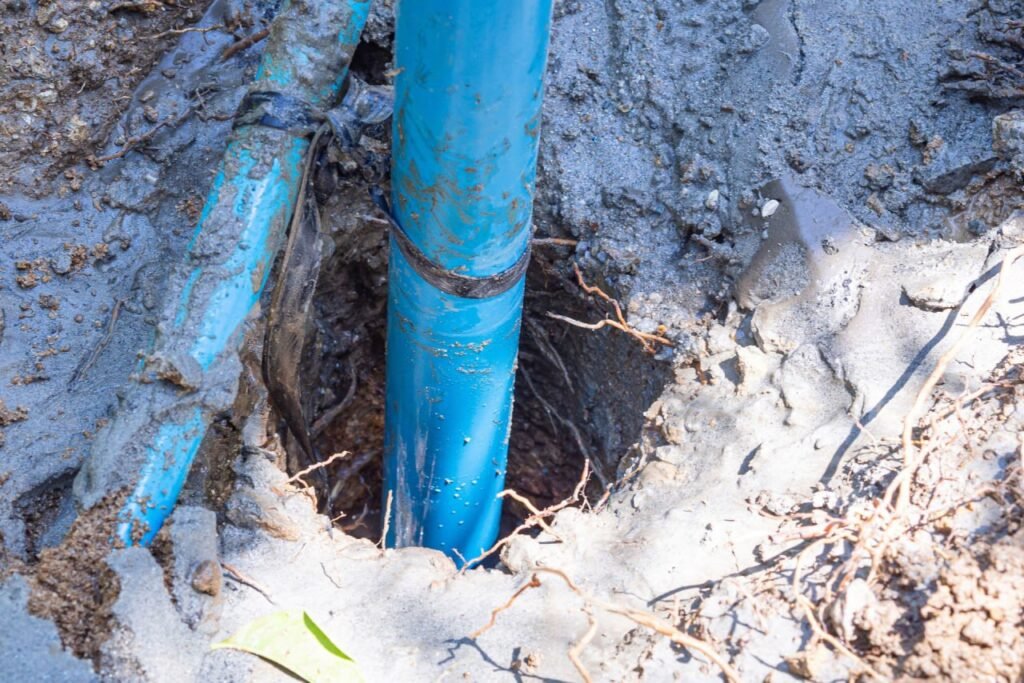
Installation Process
Installing a drainage system is a crucial part of ensuring the longevity and functionality of any property. A well-planned and properly executed installation can prevent numerous problems, such as water damage and soil erosion. Here, we’ll walk you through each step of the installation process to give you a comprehensive understanding of what’s involved.
Planning
The first and arguably the most important step in installing a drainage system is planning. Proper planning ensures that the system will be effective and efficient. Here’s what you need to consider.
1. Assessment: Evaluate the area where the drainage system is needed. Look for low spots where water collects, and identify the natural flow of water on your property.
2. Design: Based on your assessment, design the layout of the drainage system. This includes deciding the type of drainage system (e.g., French drains, surface drains), the placement of each component, and the materials required.
3. Permits: Check with local authorities to see if you need any permits or approvals before starting the installation.
4. Budgeting: Estimate the costs of materials and labor. It’s always a good idea to set aside a contingency fund for unexpected expenses.
Excavation
Excavation is the next step in the installation process. This involves digging the trenches where the drainage pipes or tiles will be placed. Here’s a detailed look at the excavation process.
1. Marking: Clearly mark the areas where you will dig. Use spray paint or flags to outline the trenches according to your design plan.
2. Digging: Use appropriate tools and equipment to dig the trenches. The depth and width of the trenches will depend on the type of drainage system you are installing. Ensure the trenches have a proper slope to facilitate water flow.
3. Soil Disposal: Properly dispose of the excavated soil. You may need to haul it away or use it elsewhere on your property.
4. Safety: Always prioritize safety during excavation. Wear protective gear and be mindful of underground utilities.
Installation
With the trenches ready, it’s time to install the drainage system components. Here’s a step-by-step guide.
1. Laying the Base: Start by laying a base of gravel or crushed stone in the trenches. This helps with drainage and provides a stable foundation for the pipes.
2. Placing the Pipes: Lay the drainage pipes or tiles in the trenches on top of the gravel base. Ensure they are correctly positioned and connected.
3. Covering the Pipes: Cover the pipes with more gravel or crushed stone. This helps to filter the water and protect the pipes from damage.
4. Backfilling: Once the pipes are securely in place, backfill the trenches with soil. Tamp down the soil to eliminate air pockets and ensure stability.
5. Surface Restoration: Restore the surface of the area to its original condition. This may involve reseeding grass, replacing sod, or repairing pavement.
Testing
After installation, it’s crucial to test the drainage system to ensure it’s functioning correctly. Here’s how to do it.
1. Visual Inspection: Start with a visual inspection. Check for any obvious issues, such as exposed pipes or uneven ground.
2. Water Test: Perform a water test by running water through the system. Observe the flow and check for any blockages or leaks.
3. Adjustments: If you notice any issues during the testing, make the necessary adjustments. This may involve re-aligning pipes or adding more gravel.
Maintenance
Maintaining your drainage system is key to ensuring its long-term effectiveness. Here are some tips for post-installation maintenance.
1. Regular Inspections: Conduct regular inspections, especially after heavy rainfall. Look for signs of erosion, blockages, or damage.
2. Cleaning: Keep the system clean by removing debris and sediment that can accumulate over time. This is particularly important for surface drains.
3. Repairs: Address any issues promptly. Small problems can quickly escalate if not dealt with.
4. Vegetation Management: Ensure that vegetation does not obstruct the drainage paths. Trim plants and remove roots that may interfere with the system.
By following these steps, you can ensure a smooth and successful installation of your drainage system. Proper planning, careful execution, and regular maintenance will keep your system working efficiently for years to come.
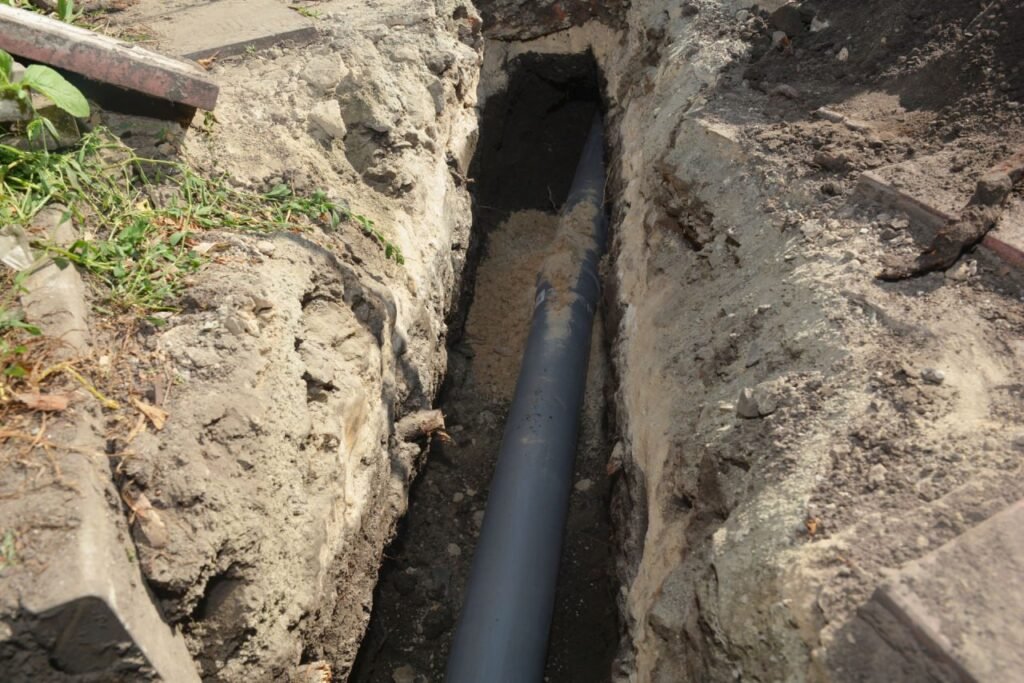
Costs Involved
Understanding the costs involved in a drainage system project is crucial for proper planning and budgeting. Here, we break down the initial expenses, highlight the long-term savings, and offer practical budgeting tips to ensure your project stays on track.
Initial Costs
When embarking on a drainage system project, the initial costs can vary significantly based on several factors. Here’s a detailed breakdown.
- Materials: The type and quality of materials you choose will greatly influence the cost. Common materials include pipes, gravel, and drainage fabrics. Opting for high-quality materials might have a higher upfront cost but can provide better durability and performance.
- Labor: Labor costs depend on the complexity of the installation and the expertise required. Hiring skilled professionals ensures the job is done correctly, potentially saving money on future repairs.
- Permits: Depending on your location, you may need permits to install a drainage system. Permit costs can vary, so it’s essential to check with your local authorities.
Long-Term Savings
Investing in an effective drainage system can lead to significant long-term savings. Here’s how.
- Preventing Water Damage: Proper drainage systems help prevent water from accumulating around your property, reducing the risk of water damage to foundations, basements, and landscaping. This can save substantial amounts on potential repair costs.
- Reducing Maintenance Costs: A well-installed drainage system requires less frequent maintenance compared to a poorly designed one. This means fewer costs associated with regular upkeep and repairs.
- Enhancing Property Value: Homes with efficient drainage systems are often valued higher. Prospective buyers are likely to pay more for a property with a reliable system in place, providing a good return on your initial investment.
Budgeting Tips
Proper budgeting is key to managing the costs of a drainage system project. Here are some practical tips.
- Get Multiple Quotes: To get a clear idea of the costs, obtain quotes from several contractors. This allows you to compare prices and choose the best option that fits your budget and requirements.
- Plan for Contingencies: Always allocate a portion of your budget for unexpected expenses. This ensures you’re prepared for any unforeseen costs that may arise during the project.
- Prioritize Quality: While it might be tempting to cut costs by choosing cheaper materials or labor, this can lead to higher expenses in the long run due to potential failures and repairs. Investing in quality from the start can save money over time.
- Consider Phased Implementation: If budget constraints are an issue, consider implementing the drainage system in phases. This approach allows you to spread out the costs over a longer period, making it more manageable financially.
By understanding these costs and incorporating these budgeting tips, you can effectively plan and execute your drainage system project, ensuring it’s both cost-effective and efficient in the long term.
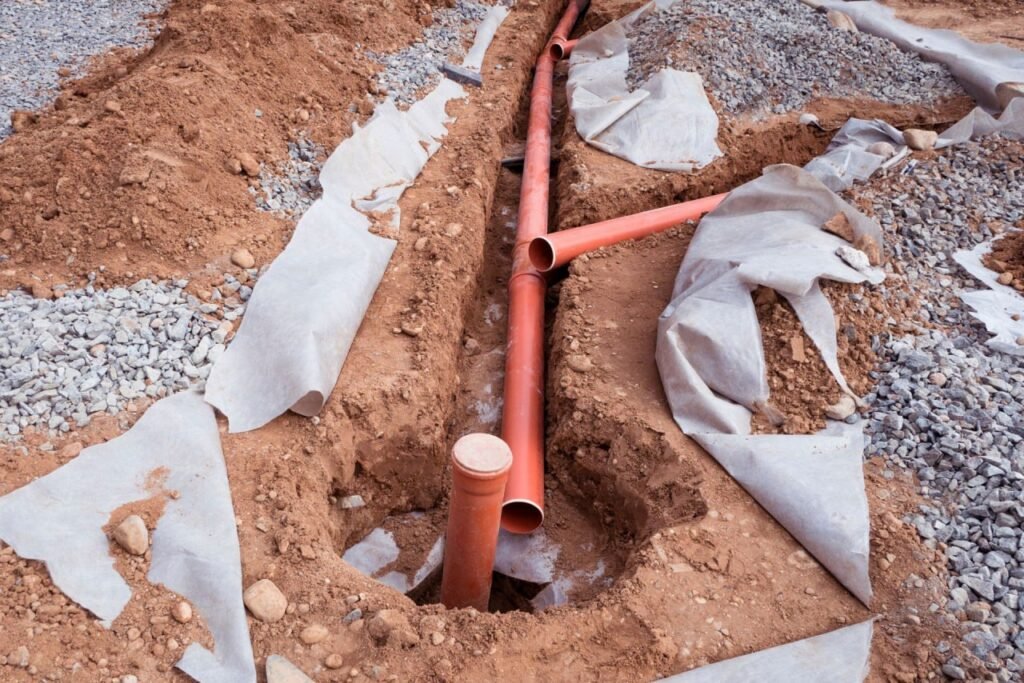
DIY Vs. Professional Installation
DIY Considerations
When deciding whether to install a system yourself, it’s crucial to weigh the pros and cons.
Pros
1. Cost Savings: One of the most significant advantages of a DIY installation is the potential cost savings. By eliminating labor costs, you can significantly reduce the overall expense.
2. Flexibility: DIY projects allow you to work on your schedule, giving you the freedom to complete the installation at your own pace.
3. Satisfaction: Successfully completing a DIY project can provide a sense of accomplishment and satisfaction, knowing you’ve done the work yourself.
Cons
1. Time-Consuming: DIY installations often take longer than professional ones, especially if you’re not experienced. The learning curve can be steep, and mistakes can lead to delays.
2. Quality of Work: Without the expertise of a professional, the quality of the installation may not be up to par. This can lead to potential issues down the line, such as system malfunctions or inefficiencies.
3. Limited Warranty: Many manufacturers’ warranties may be voided if the system is not installed by a certified professional. This could result in additional costs if something goes wrong.
Hiring Professionals
Opting for professional installation offers several benefits that can outweigh the initial cost.
Benefits
1. Expertise: Professional installers have the experience and knowledge to ensure the system is installed correctly and efficiently. Their expertise can prevent common mistakes that could lead to problems later.
2. Time Efficiency: Professionals can complete the installation much faster than a DIY approach, minimizing disruption and getting the system operational quickly.
3. Warranty and Support: Hiring a professional often comes with the added benefit of a warranty on the installation work. This provides peace of mind, knowing that any issues that arise will be covered.
4. Compliance: Professionals ensure that the installation complies with all local codes and regulations, which is essential for safety and legality.
When hiring a professional, it’s important to consider the following.
- Credentials: Ensure the contractor is licensed, insured, and has relevant certifications.
- Experience: Look for a contractor with extensive experience in installing similar systems.
- Reviews and References: Check online reviews and ask for references to gauge the contractor’s reputation and quality of work.
- Written Estimate: Obtain a detailed, written estimate to avoid any hidden costs or surprises.
Case Studies
DIY Success Story
John, a homeowner with a knack for DIY projects, decided to install his own home security system. He spent several weekends researching and planning the installation. Although the project took longer than anticipated, John successfully completed the installation. He enjoyed the process and learned a lot about the system, saving a significant amount of money in the process. John now feels more confident in his DIY abilities and enjoys the peace of mind knowing his home is secure.
Professional Installation Success Story
Sarah, a busy professional, opted to hire a certified contractor to install her solar panel system. The contractor completed the installation in just two days, ensuring everything was up to code and functioning correctly. Sarah appreciated the efficiency and professionalism of the team, and the installation came with a comprehensive warranty. She now enjoys lower energy bills and the satisfaction of contributing to a greener environment, all without the stress of a DIY project.
Whether you choose DIY or professional installation depends on your budget, time, and confidence in your skills. While DIY can be rewarding and cost-effective, professional installation offers expertise, efficiency, and peace of mind. Consider your specific situation and needs to make the best choice for your project.

Common Problems And Solutions In Drainage Systems
Dealing with drainage systems can be a challenging task, especially when common problems arise. Understanding the root causes and knowing the solutions can save both time and money. Here’s a detailed guide to some of the most frequent issues and how to address them effectively.
Blockages: Causes and How to Clear Them
Blockages are one of the most common problems in drainage systems. They can be caused by various factors including.
1. Debris Buildup: Leaves, dirt, and other debris can accumulate over time, obstructing the flow of water.
2. Grease and Fat: In kitchen drains, grease and fat can solidify, causing significant blockages.
3. Foreign Objects: Items such as sanitary products, wipes, and even toys can accidentally enter the drainage system, leading to obstructions.
4. Tree Roots: Roots can infiltrate pipes through small cracks, gradually expanding and causing blockages.
How to Clear Them
- Mechanical Cleaning: Use of plumbing snakes or augers can physically remove blockages. This is effective for both small and large obstructions.
- Hydro Jetting: High-pressure water jetting can clear stubborn blockages by blasting away debris and buildup.
- Chemical Cleaners: Commercially available chemical cleaners can dissolve grease and organic matter. However, they should be used sparingly to avoid damaging the pipes.
- Professional Help: For severe blockages, hiring a professional plumber ensures the problem is addressed safely and thoroughly.
System Failures: Common Reasons and How to Fix Them
System failures can be frustrating and often result from a combination of factors.
1. Pipe Damage: Pipes can crack, corrode, or collapse due to age, environmental conditions, or improper installation.
2. Improper Installation: Poorly installed pipes and fittings can lead to leaks and failures.
3. Pressure Issues: Excessive water pressure can strain pipes, leading to bursts or leaks.
4. Sewer Backups: When the main sewer line is blocked or damaged, it can cause wastewater to back up into homes.
How to Fix Them
- Pipe Repair or Replacement: Damaged sections of the pipe should be repaired or replaced. This often involves digging up the affected area and installing new piping.
- Correct Installation: Ensuring that all installations are performed by qualified professionals helps prevent future issues.
- Pressure Regulation: Installing pressure-reducing valves can help maintain safe pressure levels within the system.
- Sewer Line Maintenance: Regular inspections and cleanings of the main sewer line can prevent backups and major failures.
Preventative Measures: Tips to Prevent Issues from Occurring
Preventing drainage problems before they occur is always preferable to dealing with them after the fact. Here are some tips to keep your drainage system in top shape.
1. Regular Maintenance: Schedule routine inspections and cleanings to identify and address potential problems early.
2. Proper Waste Disposal: Avoid pouring grease, fats, and oils down the drain. Dispose of them in the trash instead. Use drain strainers to catch debris and prevent it from entering the system.
3. Tree Management: Be mindful of planting trees and shrubs near drainage lines. Opt for plants with less invasive root systems.
4. Water Softening: In areas with hard water, installing a water softener can prevent mineral buildup in pipes.
5. Educate Household Members: Ensure everyone in the household knows what can and cannot be flushed or poured down the drains.
By understanding these common drainage problems and their solutions, you can maintain a healthy and efficient drainage system. Regular maintenance and preventative measures go a long way in preventing major issues, saving you time and money in the long run.

Environmental Impact
Sustainable Practices: How to Make Your Drainage System Eco-Friendly
Incorporating sustainable practices into your drainage system is crucial for reducing your environmental footprint. One effective way to achieve this is by designing systems that mimic natural water flow, such as using permeable surfaces that allow water to seep into the ground, replenishing groundwater levels. Additionally, integrating rain gardens or bioswales can help filter pollutants from runoff before it enters the drainage system. Another sustainable practice is the use of greywater recycling systems, which reuse water from baths, sinks, and washing machines for irrigation or flushing toilets. These practices not only promote sustainability but also enhance the efficiency and longevity of your drainage system.
Water Conservation: Benefits of Efficient Drainage on Water Conservation
Efficient drainage systems play a vital role in water conservation. By effectively managing stormwater and reducing runoff, these systems help prevent water wastage. Properly designed drainage can direct excess water to areas where it can be reused, such as gardens or lawns, reducing the need for additional water resources. Furthermore, efficient drainage helps mitigate the risk of flooding, which can lead to water contamination and loss of potable water supplies. Implementing smart irrigation systems that adjust watering schedules based on weather conditions and soil moisture levels can further enhance water conservation efforts. By prioritizing water conservation in your drainage system, you contribute to a more sustainable and resilient water management strategy.
Eco-Friendly Materials: Use of Sustainable Materials in Drainage Systems
Choosing eco-friendly materials for your drainage system can significantly reduce its environmental impact. Opt for materials that are recyclable or made from recycled content, such as recycled plastic or rubber, which can be used for pipes and permeable paving. Additionally, consider using natural materials like gravel or stone, which have a lower environmental footprint compared to traditional concrete. Green infrastructure elements, such as vegetated swales or green roofs, can also be incorporated into drainage designs to enhance sustainability. These materials not only reduce the ecological footprint but also promote better water quality by filtering pollutants and providing habitats for local wildlife. By selecting sustainable materials, you ensure that your drainage system is both environmentally responsible and efficient.
Integrating sustainable practices, focusing on water conservation, and using eco-friendly materials in your drainage system can significantly reduce its environmental impact. These steps not only contribute to a healthier planet but also enhance the functionality and efficiency of your drainage infrastructure. By adopting these eco-friendly strategies, you can create a drainage system that is both sustainable and effective, benefiting both the environment and your community.
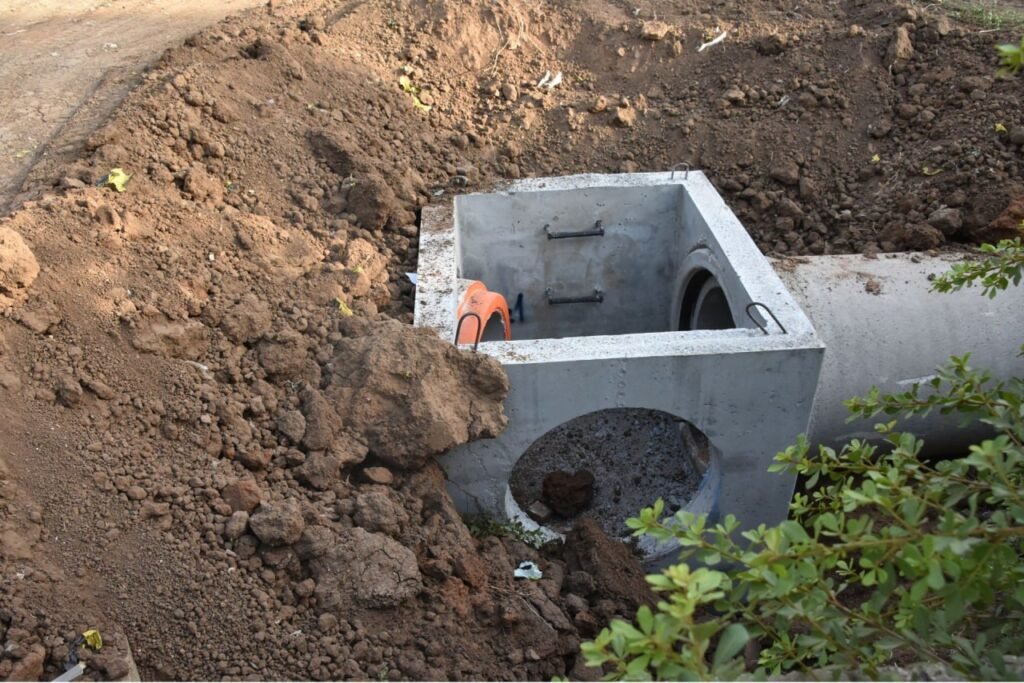
Case Studies And Testimonials
Real-Life Examples
To truly understand the impact and effectiveness of sub soil drainage systems, let’s delve into some real-life examples of successful installations in New Zealand. These case studies not only highlight the practical applications of these systems but also showcase their benefits in diverse situations.
Case Study 1: Residential Property in Auckland
In a suburban Auckland neighborhood, a homeowner faced persistent waterlogging issues in their garden, which was causing damage to the foundation of their house. The installation of a sub soil drainage system resolved the issue efficiently. The system included perforated pipes laid under the soil, which redirected the excess water away from the property. Within weeks, the homeowner noticed a significant improvement in the garden’s condition, with no further waterlogging or dampness around the house foundation.
Case Study 2: Farm in Canterbury
A dairy farm in Canterbury experienced problems with water accumulation in their fields, impacting crop yield and pasture quality. The farm management decided to install a comprehensive sub soil drainage system across several acres. The system comprised strategically placed drainage pipes and gravel trenches to facilitate better water flow. As a result, the farm saw improved soil aeration and healthier crop growth. The overall productivity of the farm increased, showcasing the critical role of effective drainage in agricultural success.
Case Study 3: Commercial Building in Wellington
A commercial property in Wellington had issues with basement flooding during heavy rains, posing a risk to valuable stored goods. A sub soil drainage system was installed around the building’s perimeter to manage and redirect the water flow. This solution not only prevented basement flooding but also enhanced the overall structural integrity of the building. The business owner reported a stress-free rainy season and highlighted the drainage system as a crucial investment for property protection.
Testimonials
Nothing speaks louder about the effectiveness of a product or service than the words of satisfied customers. Here are some testimonials from homeowners who have benefited from installing sub soil drainage systems in their properties:
John M., Auckland
“Before installing the sub soil drainage system, our backyard was a swamp every time it rained. Since the installation, we’ve had no issues with waterlogging, and our garden has never looked better. It’s been a game-changer for us.“
Rachel K., Christchurch
“The constant dampness around our house was a real concern. After getting the sub soil drainage system installed, we’ve noticed a huge difference. Our basement is dry, and the house feels much more secure. Highly recommend it.“
Simon T., Hamilton
“Living on a sloped property meant dealing with water runoff issues. The sub soil drainage system has effectively managed the water, and we haven’t had any erosion problems since. It’s a relief knowing our home is protected.“
These real-life examples and testimonials underscore the importance and effectiveness of sub soil drainage systems in New Zealand. Whether it’s for residential, agricultural, or commercial properties, these systems offer a reliable solution to manage water issues, enhance property stability, and improve overall land usability.
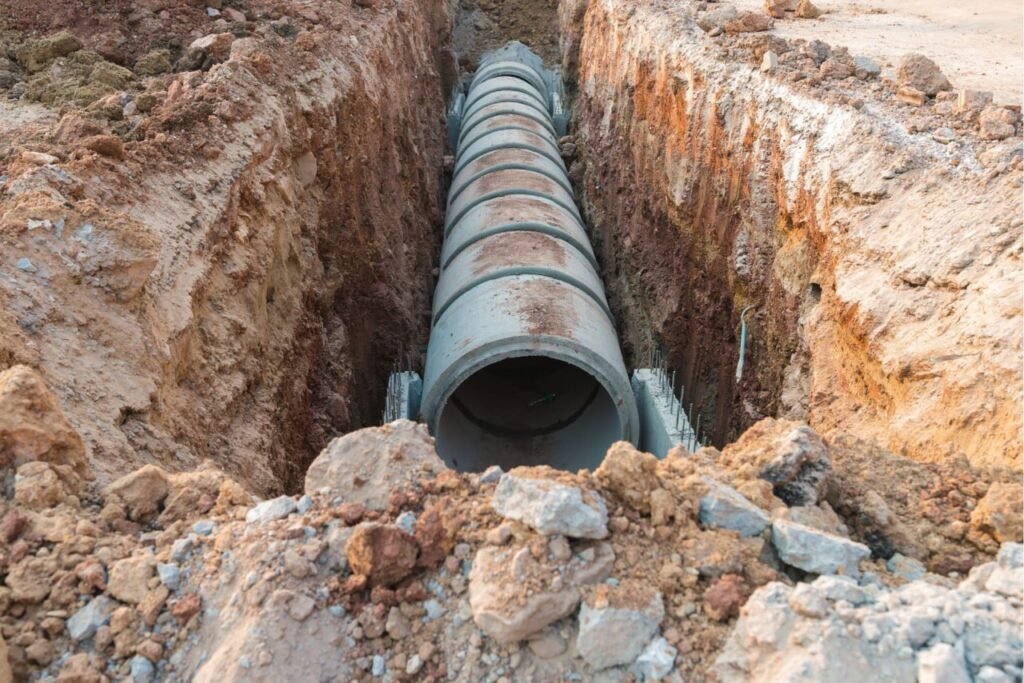
FAQs: About Sub Soil Drainage Systems NZ
What is a sub soil drainage system?
A sub soil drainage system is designed to remove excess water from the soil, preventing waterlogging and protecting structures like foundations and basements. It typically includes components such as perforated pipes, filter materials, and sometimes, French drains or soakaway pits.
Why are sub soil drainage systems important in New Zealand?
New Zealand’s diverse soil types and high rainfall in many regions make effective drainage systems essential. Without proper drainage, properties can suffer from waterlogging, foundation damage, and other water-related issues that can be costly to repair.
What are the different types of sub soil drainage systems?
Common types of sub soil drainage systems include perforated pipe systems, French drains, and soakaway pits. Each type has its specific applications and benefits, depending on the property’s needs and soil conditions.
How do I know if I need a sub soil drainage system?
Signs that you might need a sub soil drainage system include persistent water pooling in your yard, a soggy lawn, water seepage into your basement, and foundation cracks. A professional site assessment can provide a definitive answer.
Can I install a sub soil drainage system myself?
While some DIY enthusiasts might install a basic drainage system, professional installation is recommended for ensuring proper design, effective water management, and compliance with local regulations. Professional installers also have the necessary equipment and expertise.
What factors should I consider when designing a sub soil drainage system?
Key considerations include the soil type, slope of the land, rainfall patterns, and the specific drainage needs of your property. Proper planning and design are crucial for an effective system that prevents water damage.
What is the typical cost of installing a sub soil drainage system in NZ?
The cost can vary widely depending on the size and complexity of the system, the materials used, and labor costs. On average, homeowners can expect to spend between NZD 3,000 to NZD 10,000 for a professional installation.
How do I maintain my sub soil drainage system?
Regular maintenance involves checking for blockages, ensuring pipes are clear, inspecting filter materials, and repairing any damage promptly. Periodic professional inspections can help keep the system functioning effectively.
Are there any environmental benefits to having a sub soil drainage system?
Yes, proper drainage systems can prevent soil erosion, reduce waterlogging, and promote healthier plant growth by ensuring that water is managed efficiently. Sustainable materials and eco-friendly practices can further enhance these benefits.
What are the regulations for sub soil drainage systems in New Zealand?
New Zealand has specific regulations and guidelines for drainage systems to ensure they do not negatively impact the environment or neighboring properties. It’s important to consult with local authorities or a professional to ensure compliance with all relevant regulations.
Conclusion
In conclusion, we’ve explored the essential aspects of sub soil drainage systems, highlighting their significance in maintaining the structural integrity of your property and preventing water damage. We’ve delved into the benefits of these systems, including improved soil stability, reduced erosion, and enhanced plant health. Moreover, we’ve discussed the various types of sub soil drainage systems available, providing insights into their installation processes and maintenance requirements. As you consider the next steps, it’s crucial to evaluate your drainage needs carefully. If you find that a sub soil drainage system could benefit your property, don’t hesitate to seek professional advice and services.
About the Author:
Mike Veail is a recognized digital marketing expert with over 6 years of experience in helping tradespeople and small businesses thrive online. A former quantity surveyor, Mike combines deep industry knowledge with hands-on expertise in SEO and Google Ads. His marketing strategies are tailored to the specific needs of the trades sector, helping businesses increase visibility and generate more leads through proven, ethical methods.
Mike has successfully partnered with numerous companies, establishing a track record of delivering measurable results. His work has been featured across various platforms that showcase his expertise in lead generation and online marketing for the trades sector.
Learn more about Mike's experience and services at https://theleadguy.online or follow him on social media:
